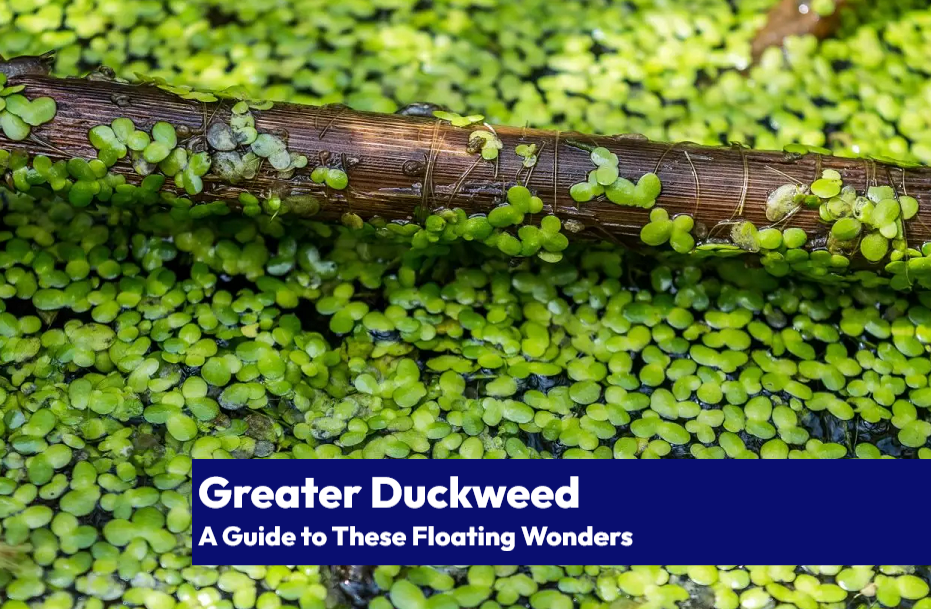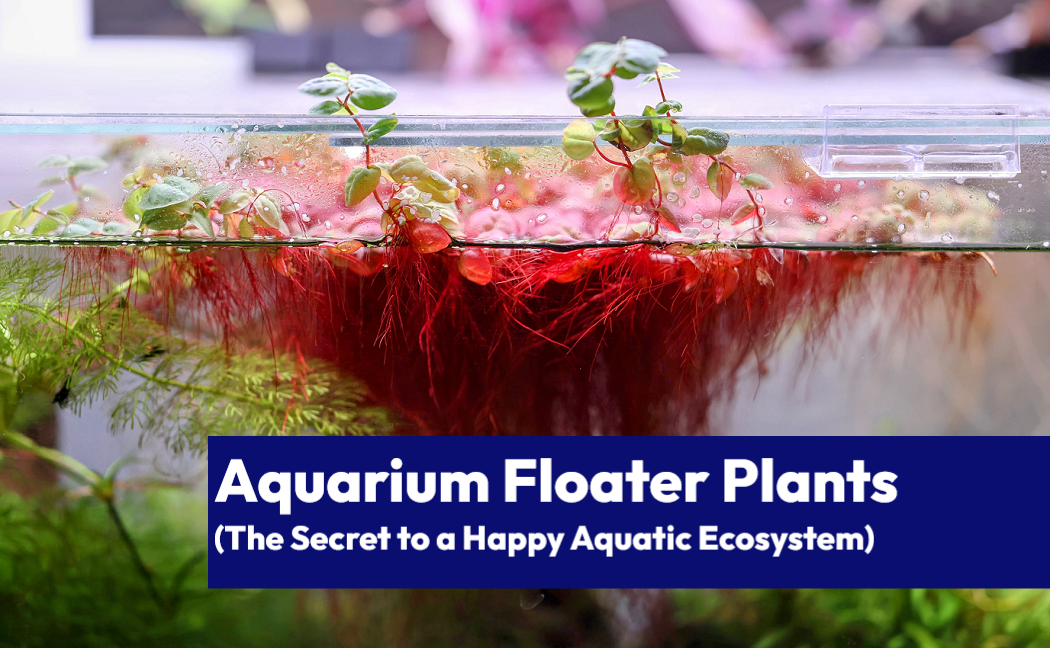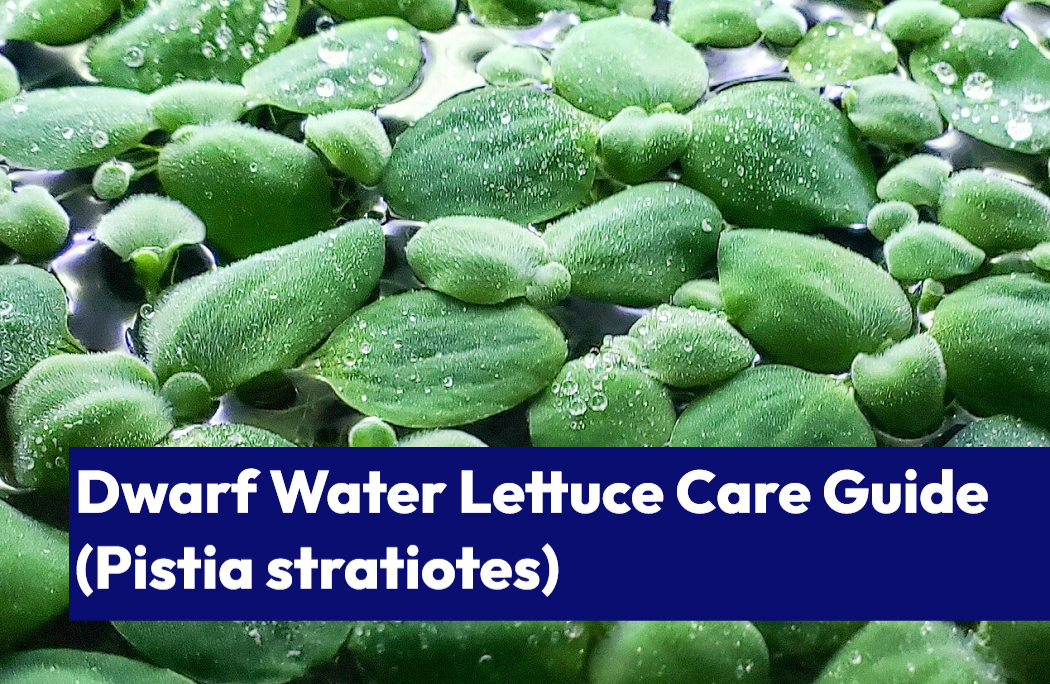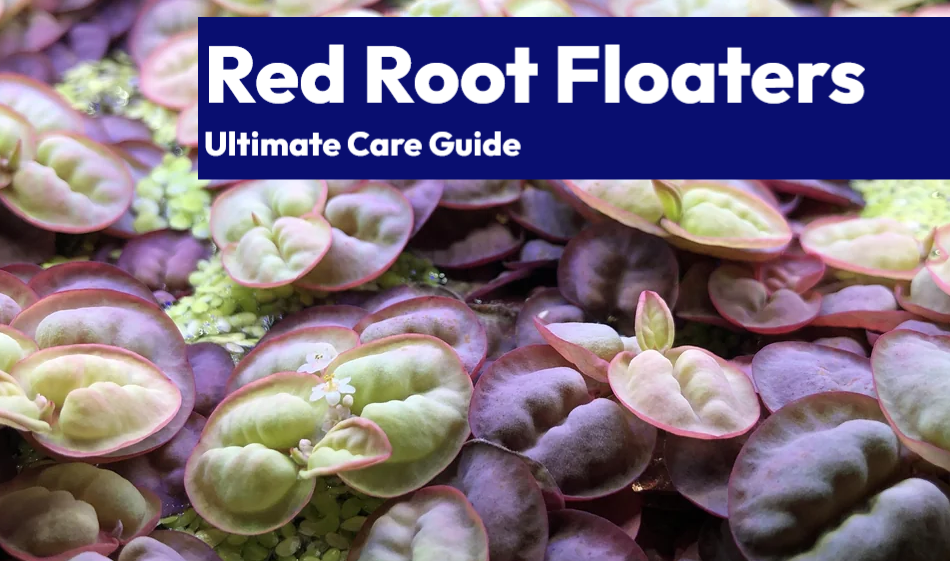Greetings, fellow aquarists! Prepare your eyes for some aquatic royalty, as we dive into the fascinating world of Salvinia Cucullata, an attractive and versatile floating plant that could be the perfect addition to your tank. Whether you’re an experienced aquascaper or a newbie fish parent, this post will give you the lowdown on everything you need to know about this little floating gem. So, hold onto your snorkels and let’s get started! 🤿
A Royal Overview: What’s the Deal with Salvinia Cucullata?
Salvinia Cucullata, also known as Asian Watermoss or the Floating Fern, is a small, fast-growing floating plant that adds a touch of greenery and flair to your aquarium. As it floats on the surface, it forms a lush carpet, providing a valuable refuge for fish and invertebrates, as well as helping to control algae growth by reducing light penetration and nutrient availability.
| Care Data | Salvinia Cucullata |
|---|---|
| Type | Floating Plant |
| Growth Rate | Fast |
| Temperature Tolerance | 59-86°F (15-30°C) |
| Optimum Temperature | 68-77°F (20-25°C) |
| General Hardness | 3-20 dGH |
| Carbonate Hardness | 2-15 dKH |
| Optimal pH Range | 5.5-7.5 |
| CO2 Requirement | Not Required |
| Propagation Type | Fragmentation |
| Placement | Floating |
The Science Behind the Name: Salvinia Cucullata’s Etymology and Origins
The name “Salvinia Cucullata” may sound like something straight out of Harry Potter, but it’s actually derived from the Latin word “cucullatus,” meaning “hooded” or “having a hood.” This moniker refers to the hood-like shape of the plant’s floating leaves. As for the genus name, Salvinia is named in honor of Italian scientist Antonio Maria Salvini (1633-1729), who made significant contributions to botany and linguistics.
💡 Fun Fact: The Salvinia genus is part of the Salviniaceae family, which contains only two genera: Salvinia and Azolla.
A Visual Feast: The Unique Appearance of Salvinia Cucullata

Salvinia Cucullata’s defining feature is its floating leaves, which are small, round, and covered in tiny hairs. These hairs form a water-repellent layer that allows the plant to float effortlessly on the water’s surface. The leaves are typically green, but they can also take on a reddish hue when exposed to bright light. As the plant grows, it forms a dense, interconnected mat, providing a cozy hideout for fish and invertebrates alike.
Underneath the water, Salvinia Cucullata has a different set of submerged leaves, which are brown and finely divided, resembling the roots of other floating plants. These submerged leaves are responsible for absorbing nutrients directly from the water, as they don’t have a proper root system like most aquatic plants. So, don’t be alarmed if you don’t see any roots – that’s just how Salvinia Cucullata rolls!
The plant also has a unique reproductive strategy. It produces tiny, inconspicuous flowers that are barely visible to the naked eye. The flowers are produced on the submerged leaves, tucked away in a cozy little chamber. Once pollinated, they give rise to the next generation of Salvinia Cucullata, ready to conquer the aquatic world.
One of the reasons I love Salvinia Cucullata is because it adds an extra layer of depth to an aquarium. Imagine looking at your tank from the side, with the floating fern creating a green canopy above and your other plants thriving below. It’s like an underwater forest, and who wouldn’t want that in their living room?
💡 Pro Tip: Salvinia Cucullata’s floating leaves can help reduce surface agitation, creating a more stable environment for your tank’s inhabitants. However, make sure not to let it cover the entire surface, as this can reduce gas exchange and oxygen levels in the water.
Size Matters: How Big Does Salvinia Cucullata Get and How Fast Does It Grow?
Salvinia Cucullata is a relatively small floating plant, with individual leaves typically measuring around 0.2-0.4 inches (5-10 mm) in diameter. Under optimal conditions, the plant can grow very quickly, covering the surface of your aquarium in a matter of weeks.
This rapid growth rate can be both a blessing and a curse. On one hand, it means that your tank will be graced with a lush, green carpet in no time. On the other hand, it also means that you’ll need to stay on top of maintenance and pruning to prevent the plant from overtaking your entire aquarium. But hey, nobody said that being an aquatic gardener was easy, right?
Salvinia Cucullata: Benefits For Your Aquarium
Salvinia Cucullata isn’t just a pretty face – it also has a range of benefits for your aquarium. By absorbing excess nutrients from the water, the plant helps to control algae growth, ensuring that your tank stays crystal clear and algae-free. Its floating leaves provide shade, which can help to regulate temperature and protect your fish from excessive light. The dense mat of leaves also offers a safe haven for fish and invertebrates, making it a valuable addition to breeding tanks or tanks with shy or vulnerable inhabitants.
Tank Size: How Big Does Your Aquarium Need to Be for Salvinia Cucullata?
Salvinia Cucullata is suitable for a wide range of tank sizes, from small desktop aquariums to large, room-dominating displays. Due to its fast growth rate, even a small amount of the plant can quickly spread to cover the surface of your aquarium. However, it’s essential to keep the plant’s growth in check and avoid overcrowding your tank.
In general, any aquarium larger than 5 gallons (19 liters) should be suitable for Salvinia Cucullata. For smaller tanks, it’s crucial to monitor the plant’s growth closely and trim it regularly to prevent it from covering the entire water surface, which could lead to oxygen depletion and other issues.

Going with the Flow: Water Parameters for Salvinia Cucullata
Salvinia Cucullata is a hardy and adaptable plant that can tolerate a wide range of water parameters. Ideally, the water temperature should be between 68-77°F (20-25°C), with a pH range of 5.5-7.5. The plant can tolerate a general hardness of
3-20 dGH and a carbonate hardness of 2-15 dKH. Although Salvinia Cucullata can adapt to various water conditions, it’s essential to maintain stable parameters to ensure the health and well-being of both your plant and your tank’s inhabitants.
💡 Expert Tip: If you’re having trouble maintaining stable water parameters, consider investing in a reliable aquarium heater, thermometer, and water testing kit. These tools will help you keep your tank’s conditions in check, ensuring a happy and healthy environment for your aquatic buddies.
Let There Be Light: Salvinia Cucullata’s Lighting Requirements
Salvinia Cucullata can tolerate a range of lighting conditions, from low to high light. However, it will grow best under moderate to high light levels. If you want to promote rapid growth and enhance the plant’s reddish hues, you may want to consider using a high-quality aquarium light with a full spectrum. Just make sure not to go overboard, as excessive light can also lead to algae growth.
💡 Important: Remember that Salvinia Cucullata’s floating leaves can shade the plants below. If you have other light-loving plants in your tank, be sure to keep the floating fern in check to ensure that all your plants get their fair share of light.
The Great CO2 Debate: Does Salvinia Cucullata Require Carbon Dioxide Supplementation?
Salvinia Cucullata does not require carbon dioxide (CO2) supplementation to grow. As a floating plant, it has free access to atmospheric CO2 to photosynthesize with.
Planting 101: Getting Your Salvinia Cucullata Settled In
Planting Salvinia Cucullata is as easy as pie. Since it’s a floating plant, there’s no need to fuss with substrate or planting tools. Simply place the plant on the water’s surface, and it’ll do the rest. To encourage even growth, you can spread the plant evenly across the water surface, allowing it to form a dense, interconnected mat.
When introducing Salvinia Cucullata to your aquarium, make sure to inspect it carefully for any signs of pests or diseases. Quarantine any new plants before adding them to your main tank, as a precautionary measure. This will help you avoid introducing any unwanted hitchhikers that could harm your aquarium’s ecosystem.

Top or Bottom: Where to Place Salvinia Cucullata in Your Tank
Since Salvinia Cucullata is a floating plant, it should be placed on the water’s surface. As it grows, it will form a lush, green carpet that provides shade and shelter for your tank’s inhabitants. Just remember to keep the plant’s growth in check, as overcrowding can lead to oxygen depletion and other issues.
💡 Pro Tip: To prevent your floating plants from being pushed around by the water flow, you can use airline tubing or a similar material to create a “corral” for the plants. This will help keep them in place and prevent them from covering the entire water surface.
Feeding Time: Fertilization Requirements for Salvinia Cucullata
Salvinia Cucullata is not a particularly demanding plant when it comes to fertilization. Since it absorbs nutrients directly from the water column, it can often obtain enough nutrients from fish waste and other organic matter in your tank. However, if you notice any signs of nutrient deficiencies (such as yellowing leaves or slow growth), you may want to consider supplementing with a liquid fertilizer. This will provide the plant with essential nutrients like nitrogen, phosphorus, and potassium, ensuring that it grows strong and healthy.
💡 Fun Fact: Salvinia Cucullata can help you gauge the nutrient levels in your aquarium. If the plant is growing rapidly and looking healthy, it’s a good indication that your tank has a sufficient supply of nutrients. If it’s struggling, you may need to adjust your fertilization regimen.
Keep It Trim: Maintenance and Pruning Salvinia Cucullata
One of the most important aspects of Salvinia Cucullata care is regular maintenance and pruning. Due to its fast growth rate, the plant can quickly become overgrown, covering the entire water surface and blocking out light for other plants in your tank. To prevent this, simply scoop out extra plant mass, removing any excess growth and ensuring that it doesn’t overcrowd your aquarium.
💡 Expert Tip: Try to remove the older, larger leaves and leave the smaller, younger ones behind. This will promote new growth and help maintain the plant’s attractive appearance.
Troubleshooting Growth Problems and Deficiencies in Salvinia Cucullata
If your Salvinia Cucullata isn’t growing as well as you’d like, there could be several reasons behind it. Here are some common issues and how to address them:
- Inadequate light: Make sure your plant is receiving enough light to support its growth. If necessary, consider upgrading to a higher-quality aquarium light.
- Nutrient deficiencies: Supplement with a liquid fertilizer to provide the plant with essential nutrients.
- Poor water quality: Regular water changes and testing will help maintain optimal water conditions for your plant.
- Pests or diseases: Inspect your plant regularly for signs of pests or diseases, and take appropriate action if needed.
Propagation Nation: How to Multiply Your Salvinia Cucullata
Salvinia Cucullata is a self-propagating plant, meaning that it will naturally multiply and spread across the water’s surface. To encourage faster propagation, you can manually divide the plant into smaller sections and spread them out across the water surface. This will give each section more space to grow and ultimately result in a larger, more robust plant population.
Land or Sea: Can Salvinia Cucullata Grow Emersed?
Salvinia Cucullata is primarily an aquatic plant and typically grows best when fully submerged. However, it is possible for the plant to grow emersed (with its leaves above the water surface) under certain conditions. If you’re interested in experimenting with emersed growth, make sure to maintain high humidity levels to prevent the plant from drying out.
A Trip Down Memory Lane: Origin and Native Range of Salvinia Cucullata
Salvinia Cucullata hails from the tropical and subtropical regions of Southeast Asia, where it can be found growing in ponds, lakes, and slow-moving rivers. Its ability to adapt to various environmental conditions has allowed it to thrive in a range of aquatic habitats, making it a popular choice for aquarium hobbyists worldwide.
The Name Game: Salvinia Cucullata Taxonomy
Salvinia Cucullata belongs to the family Salviniaceae, which is comprised of aquatic ferns. The genus Salvinia is named after the Italian scientist Anton Maria Salvini, who was a prominent figure in the world of botany during the 17th and 18th centuries. Below is a table that breaks down the taxonomy of Salvinia Cucullata:
| Kingdom | Phylum | Class | Order | Family | Genus | Species |
|---|---|---|---|---|---|---|
| Plantae | Polypodiophyta | Polypodiopsida | Salviniales | Salviniaceae | Salvinia | S. cucullata |
The Grand Finale: Conclusion, Final Thoughts, and Wrapping Up
In conclusion, Salvinia Cucullata is an attractive and versatile floating plant that makes a great addition to any aquarium. Its ease of care, rapid growth, and ability to adapt to various conditions make it an excellent choice for both beginners and experienced hobbyists alike. By providing the right environment and staying on top of maintenance, you can enjoy a lush, vibrant carpet of Salvinia Cucullata in your aquatic paradise.
TL;DR:
- Salvinia Cucullata is a floating fern with unique, hooded leaves.
- It’s an easy-to-grow plant that’s suitable for beginners.
- Provides shade, shelter, and helps improve water quality in your aquarium.
- Can tolerate a range of lighting conditions, but prefers moderate to high light.
- No CO2 supplementation needed, but it can boost growth if provided.
- Regular maintenance and pruning are essential to prevent overgrowth.
- Propagation is easy, as the plant naturally multiplies and spreads.

Tim Priest, a renowned aquarium expert with over 15 years of experience in aquatic gardening and fish education, is dedicated to helping enthusiasts create stunning and thriving aquatic environments. As the founder of LearnTheAquarium.com, Tim shares his wealth of knowledge, passion, and expertise through engaging articles, educational resources, and personalized advice.
Discover the secrets to creating captivating underwater landscapes and maintaining healthy aquatic ecosystems. Join Tim on an exciting journey and let your aquarium adventure begin!





